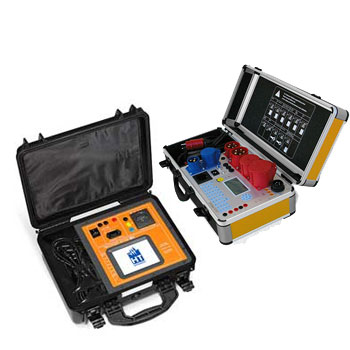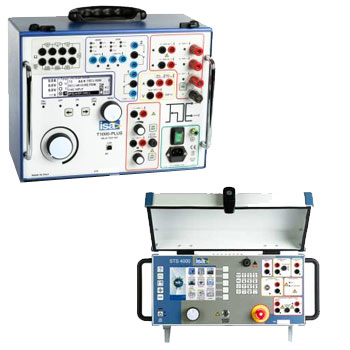Working pressure 630bar (9000psi) in imitation of ISO 15171-2
 Catalog Excerpt Catalog Excerpt
|
 Datasheet Datasheet
|
 Datasheet (Gas) Datasheet (Gas)
|

Minimess® Couplings – Series 1615 (M16×1.5) – compact service & test ports up to 630 bar
Minimess® Series 1615 with M16×1.5 thread combines under-pressure connectability with drip-free handling and high durability—ideal as permanent test, vent and fill points in hydraulics, pneumatics and HVAC/R for both mobile and stationary systems.
Features (series-dependent): working pressure up to 630 bar, materials zinc–nickel plated steel or 316/316L stainless, seals NBR/FKM/EPDM/PTFE, integrated check/isolating element, dust cap, color coding, and adapters to 7/16″-20 UNF (DN2/DN4 microbore hoses) and G 1/4 for gauges/transmitters.
ICS Schneider Messtechnik supports selection, adaptation, hose assembly, calibration and complete service-kit configuration.
FAQ on Minimess® Series 1615 (M16×1.5)
Answers on interface, pressure/temperature limits, media, sealing, adapters, installation, safety and best practices.
What does “1615” indicate and where is it used?
“1615” designates the M16×1.5 interface. It is common in industrial/mobile hydraulics, on test benches, at HVAC/R service points and in lubrication/air systems.
What pressure and temperature ranges apply?
Depending on the series up to 630 bar working pressure. Typical temperature range −30…+100 °C, up to about +200 °C with FKM. Refer to the specific datasheet for exact limits.
Which media are compatible?
Hydraulic oils (mineral/synthetic), water–glycol, diesel/fuels, air/inert gases. For aggressive media choose stainless versions with PTFE sealing.
Zinc–nickel steel or 316/316L stainless—how to choose?
Zinc–nickel is rugged and economical for standard environments. 316/316L is recommended for corrosive atmospheres, offshore, food/pharma or chemical exposure.
Which seal materials are available?
| Seal | Resistance | Typical use |
|---|---|---|
| NBR | Oils/diesel; −30…+100 °C | Hydraulic standard |
| FKM (Viton®) | Higher T, fuels/chemicals | High-temp/process |
| EPDM | Water/glycol, some steam | H2O/glycol circuits |
| PTFE | Very broad chemical, high T | Process/chemicals |
Which adapters and hoses can I use?
Adapters to 7/16″-20 UNF (for DN2/DN4 microbore hoses), G 1/4 (BSPP), SAE and more. Hoses: DN2 up to 630 bar, DN4 up to 400 bar, plus PTFE-braided options for chemical/high-temperature service.
Can it be coupled under pressure?
Yes—Series 1615 supports under-pressure coupling with very low spillage. Align axially and insert to the stop until the audible/tactile click confirms engagement.
How do I install a 1615 port correctly?
- Clean sealing faces; use the correct O-ring/face seal.
- Start the thread by hand, then tighten to the specified torque.
- For cylindrical BSPP/G adapters do not apply tape to the cone/face—sealing is via the O-ring/face.
How do I prevent leakage and contamination?
Use dust caps, keep coupler/plug clean, protect the sealing cone; remove dirt/moisture before coupling. Inspect O-rings regularly as wear parts.
How do I connect gauges & transmitters?
Via adapters M16×1.5 → 7/16″-20 UNF (hose) or → G 1/4 for fixed gauges/0–600 bar sensors. For continuous monitoring add check/isolating and pulse damping.
Are color coding and service kits available?
Yes—color caps/rings for clear point identification (e.g., circuit A/B, low/high pressure). Service cases are available with couplings, hoses, gauges and adapters.
How many reuses are feasible?
Metal components are reusable many times. Replace O-rings when damaged or aged.
What about bleeding/draining and oil sampling?
Versions with an integrated needle allow controlled venting/draining and sampling. Always use a suitable hose and catch container.
Safety notes
- Operate only within the specified p/T limits and with approved media.
- Wear PPE; consider pressure spikes.
- Leak-check before work; support/secure pressurized lines.
Common issues & quick fixes
- Seat leakage → inspect/replace O-ring, clean seat, verify torque.
- Hard to couple → check alignment, remove contamination, reduce Δp.
- Pressure drop → leak-check hose/adapter, inspect check valve.
Do you support selection & calibration?
Yes—we specify materials/seals, define adapters/hoses, provide factory/DAkkS calibration for gauges/sensors and can integrate IIoT gateways on request.












































































































































































